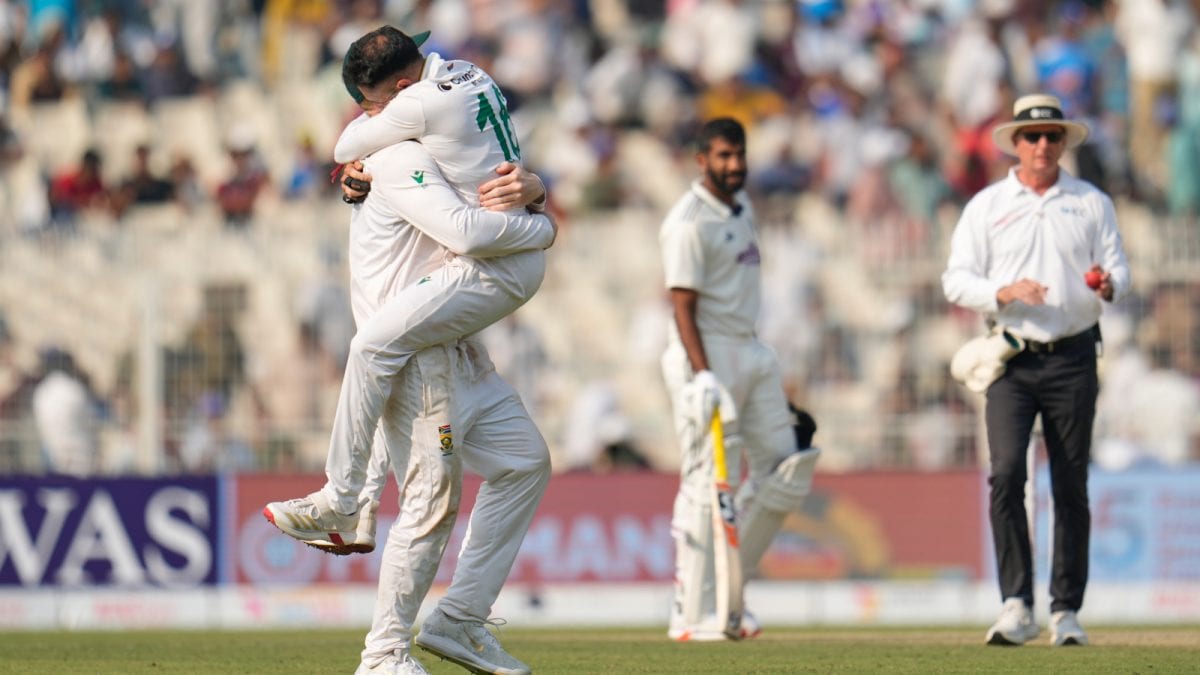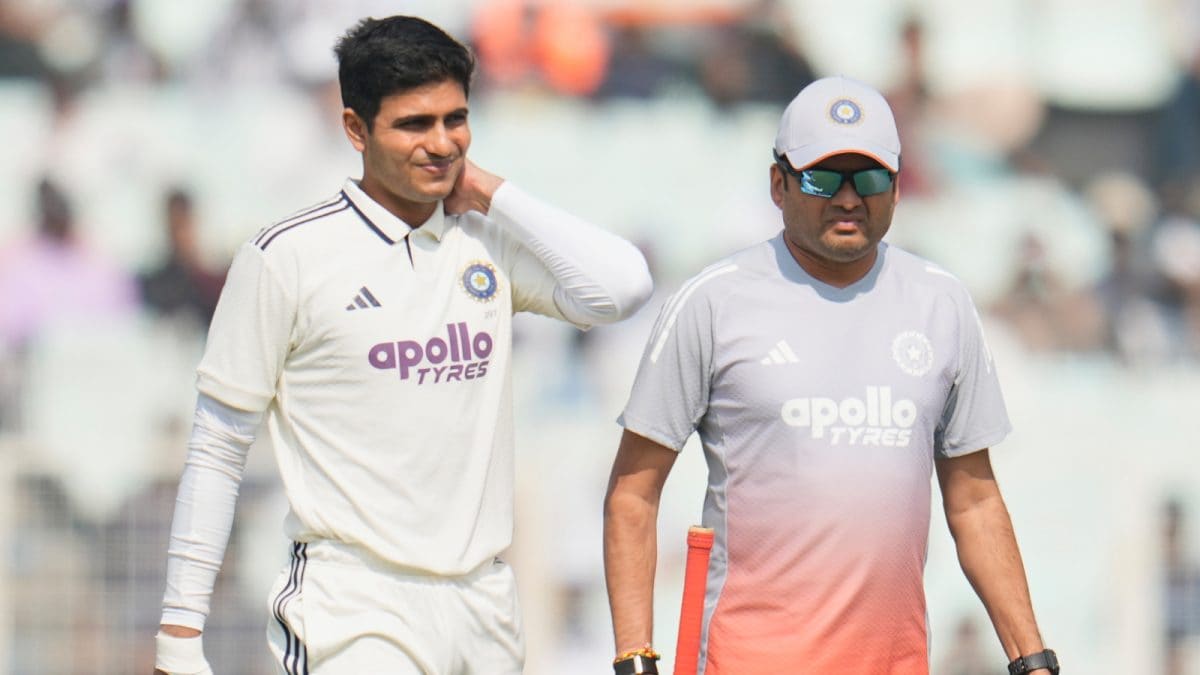Last Updated:
India suffered a 30-run defeat to South Africa in Kolkata despite getting their desired turning pitch, raising questions on strategy.

India’s capitulation has raised questions over their batting quality against spin bowling. (AP Photo)
India had asked for a pitch that would turn a bit, with enough carry to the bat. However, a 30-run drubbing by South Africa in Kolkata inside three days should force them to reconsider their obsession with turning tracks. Losing heavily despite getting the surface they wanted has raised serious questions.
And the answers offered by head coach Gautam Gambhir don’t provide a convincing solution.
Do we really need pitches that show uneven bounce on the first day and then turn into graveyards for batters against spin? The question continues to trouble those who expected a five-day contest in the longest format’s return to Eden Gardens after six years.
But Gambhir dismissed the noise, saying, “This is exactly what we had asked for.”
Addressing the media on Sunday evening, the Indian head coach said, “I thought the curator was very supportive. And I still believe that irrespective of how the wicket was, 123 [124] was chaseable. And I felt that if you are willing to put your head down, and if you have a solid defence, if you have the temperament, you can definitely score runs.”
The match saw 38 wickets fall in just eight sessions after Indian captain Shubman Gill was ruled out with a neck spasm. Spinners accounted for 22 wickets while pacers took 16. Yet Gambhir refused to label it a difficult surface.
“I don’t think it was a tough wicket. It was a wicket where your technique can be judged, your mental toughness can be challenged, and more important than that is your temperament. Because if you are looking to grind, if you are looking to bat long, then you can make runs. But if you are in an attacking mindset, or if you try to play attacking cricket, then it is difficult,” he said.
“All the people who have played good defence, whether it is KL Rahul, Temba or Washington, all of them have made runs,” he added.
Another remark that stood out was Gambhir’s claim that turning tracks reduce the impact of the toss. Yet in India’s last three home Tests on early-turning pitches – two against New Zealand in Pune and Mumbai last year, and the latest against South Africa – they lost the toss and lost the match each time. Opponents have consistently put them under pressure by making them chase.
But the head coach doubled down on skill set, shutting down further debate on the Eden surface.
“We’ve always said that the turning wicket should be where there’s very little turn on day one so that the toss doesn’t become an important factor,” he said.
“We’ve never said that we want to play on a bad wicket or we want to play on rank-turners. Ultimately, if we had won this test match, you wouldn’t even be talking about this pitch. So, my point is, we need to improve mentally and skill-wise rather than discussing the wicket. Because wickets are the same for both teams.”
“So, whatever we get in Guwahati, we’ve got the guys to deliver in any condition and on any surface as well,” he added.
This raises another question: have India begun underestimating their own bowlers?
Jasprit Bumrah and Kuldeep Yadav form one of the most dangerous wicket-taking pairs in Indian conditions. Mohammed Siraj is equally potent, while Ravindra Jadeja remains one of the finest finger spinners in the world, with Washington Sundar and Axar Patel offering similar control and valuable runs with the bat.
In contrast, South Africa were missing their premier quick, Kagiso Rabada, and fielded a less experienced attack featuring Simon Harmer, Keshav Maharaj, and Marco Jansen.
India clearly held the advantage, yet by preparing spinning tracks, they narrowed that gap – a mistake they had already repeated against New Zealand.
India have now lost nine of 18 Tests under Gambhir, including four at home. Even their seven wins in this span include four against lower-ranked Bangladesh and West Indies. Still, the coach insists the team is young and inexperienced.
“There are a lot of youngsters in this dressing room. There is not much experience in batting from top to bottom, I think more than the skill, in Test match cricket not only skill is required, but mental toughness is also required,” Gambhir said.
“Because in Test cricket, if you are not able to absorb pressure, because no matter how much turning the wicket is, the first 10-15 minutes are tough. Once you see off that, you get used to the pace of the wicket and things start getting easier. So, I think more than the skill, I think it’s the ability to absorb pressure,” he added.
As India head to Guwahati for the second Test, the larger question remains: will they opt for a surface that offers a fair contest between bat and ball, or one that continues to expose their own batters?

A cricket enthusiast whose dreams of playing for India paved the way for a compelling journey in journalism. With a comprehensive coverage spanning international and domestic cricket across formats, I have had …Read More
A cricket enthusiast whose dreams of playing for India paved the way for a compelling journey in journalism. With a comprehensive coverage spanning international and domestic cricket across formats, I have had … Read More
November 17, 2025, 11:02 IST
Read More






